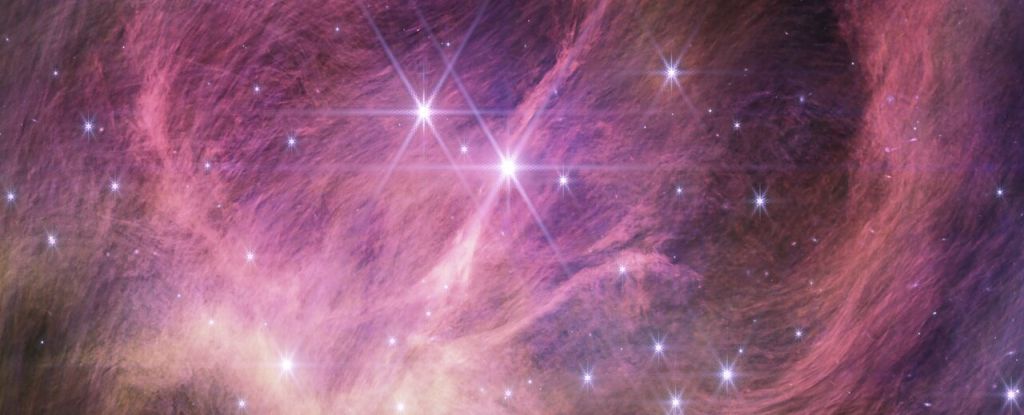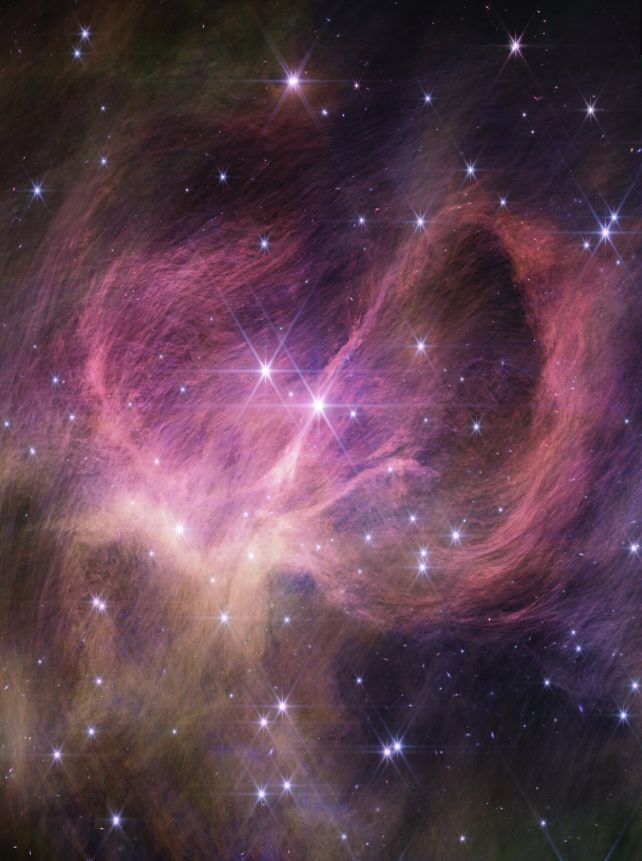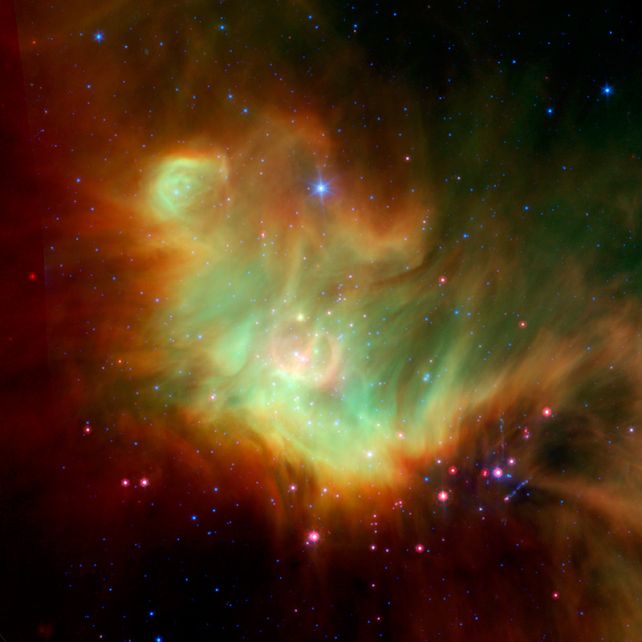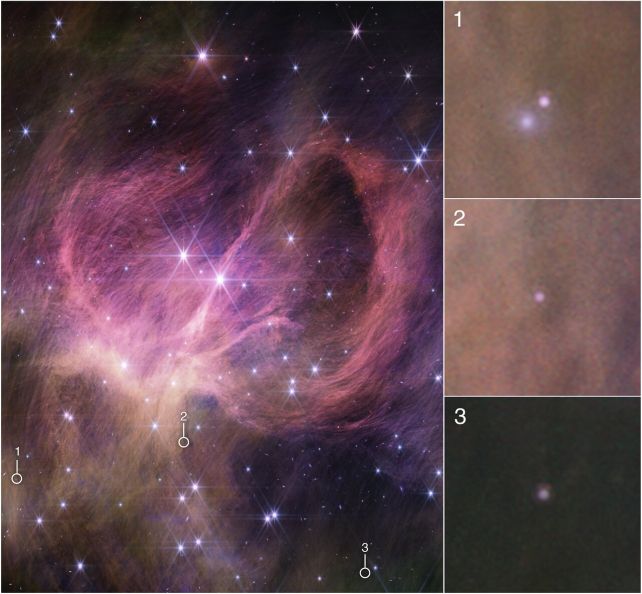
Scientists have encountered a newly discovered celestial object that challenges our understanding of stellar birth processes.
This enigmatic find is a solitary brown dwarf drifting through space and with a mass merely 3 to 4 times that of Jupiter, it stands out as the lowest-mass object of its kind identified to date.
This discovery raises intriguing questions, particularly about its formation, as current models are adept at explaining the creation of giant planets in stellar discs. However, in the context of this celestial cluster, the likelihood of this object forming in a disc is low. Instead, it seems to have formed more like a star. With a mass three times that of Jupiter, it is a mere 300 times smaller than our Sun. This prompts us to explore how the star formation process operates at such exceptionally small masses,” explains astronomer Catarina Alves de Oliveira of the European Space Agency.

Brown dwarfs are colloquially known as “failed stars,” a term that, while a bit harsh, is not entirely inaccurate. Stars originate from dense clumps in space clouds of gas and dust, collapsing under gravity. They grow until reaching sufficient mass for core pressure and heat to trigger hydrogen fusion, with a minimum mass requirement of about 80 to 85 times that of Jupiter.
Similarly, brown dwarfs form in the same way but lack the mass needed to initiate hydrogen fusion. Despite this, they are not considered planets. The term “brown” in their name signifies their size, smaller than white dwarf stars yet larger than non-glowing ‘dark’ planets.
When a brown dwarf reaches a critical mass, approximately 13 Jupiter, it can undergo fusion, not of hydrogen but of its heavier isotope, deuterium, requiring lower pressure and temperature than hydrogen fusion.
Planets, on the other hand, form through a distinct process, gradually accumulating material left after a star’s formation. Objects resulting from gravitational collapse but lacking the mass for fusion are sometimes called sub-brown dwarfs, planetary-mass brown dwarfs, or rogue planets.

Astronomer Kevin Luhman of Pennsylvania State University and his team are on a quest to identify the smallest objects in the universe.
“One fundamental question found in every astronomy textbook is, what are the smallest stars?” Luhman explains. “That’s precisely what we’re aiming to answer.”
Utilizing the James Webb Space Telescope, they conducted a survey of the center of the young star cluster IC 348 in the Perseus star-forming region, situated approximately 1,000 light-years away. Given that sub-brown dwarfs emit cooler and dimmer light compared to stars, the JWST’s infrared sensitivity was crucial. They initially employed the near-infrared NIRCam to identify candidates and then used NIRSpec, the spectrograph, for further study.
Three new members of IC 348 met the criteria, exhibiting masses ranging from three to eight Jupiters and temperatures spanning 1100 to 1800 Kelvin (827 to 1527 degrees Celsius, or 1520 to 2780 Fahrenheit). The smallest among them, with a mass of approximately three to four Jupiters, set a new record.
This discovery poses a genuine puzzle. In the context of star formation, a cloud possesses considerable mass and, consequently, gravity. Forming an object the size of a planet, however, would necessitate a smaller cloud and, by extension, less gravity, making the formation process more challenging, according to the researchers.

These objects could potentially be exoplanets that were expelled from their planetary systems, although this is considered unlikely. Despite their substantial size in relation to planets, most stars in IC 348 are small. Additionally, explaining the formation of large planets around small stars presents its own set of challenges. Furthermore, the youth of the cluster raises doubts about the possibility of planets forming and being ejected so far from their systems in such a short time.
Adding to the intrigue, spectrographic analysis unveiled the presence of an unidentified hydrocarbon in two of the objects. While this mysterious chemical species has been observed in the atmospheres of Saturn and Titan within the Solar System, as well as drifting in interstellar space, this marks its first detection in an extrasolar atmosphere.
Evidently, whatever these objects are, they introduce a fresh and intriguing dimension to our understanding of the complex interplay between stars and planets.
“This is the inaugural identification of this molecule in the atmosphere of an object beyond our Solar System,” remarks Alves de Oliveira. “Existing models for brown dwarf atmospheres do not anticipate its existence. Examining objects with younger ages and lower masses than ever before has revealed something novel and unforeseen.”
The findings have been documented in The Astronomical Journal.





